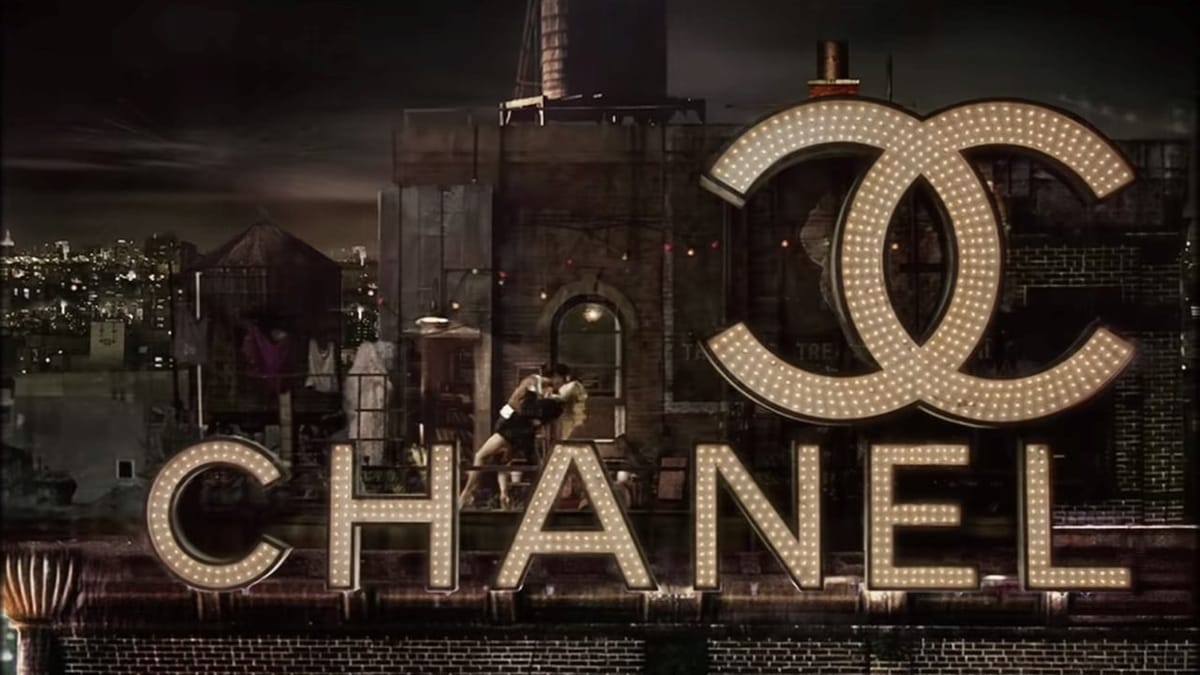Chanel is a French luxury fashion house founded in 1910 by Coco Chanel. The company is headquartered in London and specializes in women’s ready-to-wear, luxury goods, and accessories. Chanel is well known for its No. 5 perfume and “Chanel Suit”.
Coco Chanel was born in Saumur, France, in 1883. She was orphaned at a young age and raised in an orphanage. After leaving the orphanage, she worked as a seamstress and milliner. In 1910, she opened her first shop in Paris, selling hats and other accessories.
Chanel’s designs were revolutionary for their time. She rejected the traditional corseted silhouette and instead favored simple, comfortable garments made from jersey fabric. She also introduced the “little black dress”, which is now a classic piece of women’s clothing.
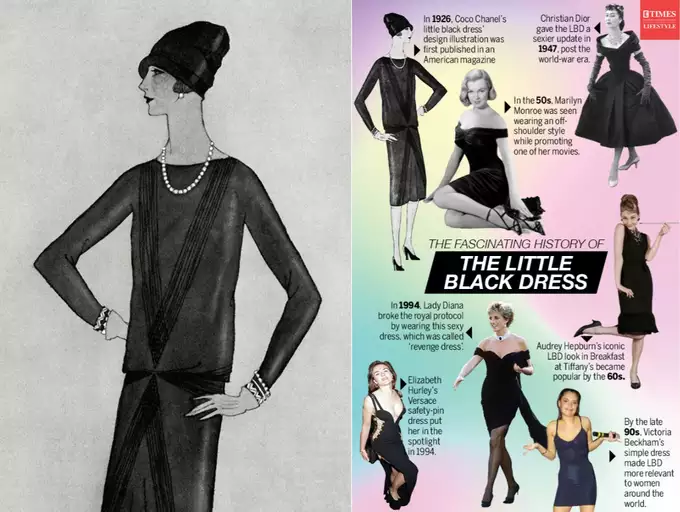
Source: The Times of India
Chanel’s perfumes are also some of the most famous in the world. Chanel No. 5 was introduced in 1921 and is still one of the best-selling perfumes today.
Chanel is a luxury brand that is known for its high quality and timeless designs. The company’s products are coveted by fashion lovers all over the world.
Here are some of the things that make Chanel special:
- High quality materials: Chanel uses only the finest materials in its products, from the fabrics to the hardware. This ensures that their products are durable and will last for many years.
- Timeless designs: Chanel’s designs are classic and timeless. They are not trendy, so they will not go out of style. This makes them a good investment for fashion lovers.
- Iconic status: Chanel is an iconic brand that is known all over the world. This gives its products a certain cachet that other brands cannot match.
Founding History of Chanel: The Rise of an Iconic Fashion House
The founding history of Chanel dates back to the early 20th century when Gabrielle “Coco” Chanel, an ambitious and visionary young woman, embarked on a journey that would revolutionize the world of fashion and create a timeless legacy of elegance.
Gabrielle Chanel was born on August 19, 1883, in Saumur, France, to humble beginnings. After the tragic death of her mother, she was sent to an orphanage by her father, who was a peddler. Her formative years at the convent school influenced her strong and independent personality, shaping her as a woman who would later defy societal norms and transform women’s fashion.
In her early twenties, Coco Chanel moved to the fashionable city of Paris, where she worked as a cabaret singer and acquired the nickname “Coco.” During this time, she also began creating stylish hats for herself and her friends. Her chic and innovative designs caught the attention of influential individuals, paving the way for her to open her first millinery shop at 21 Rue Cambon in Paris in 1910.
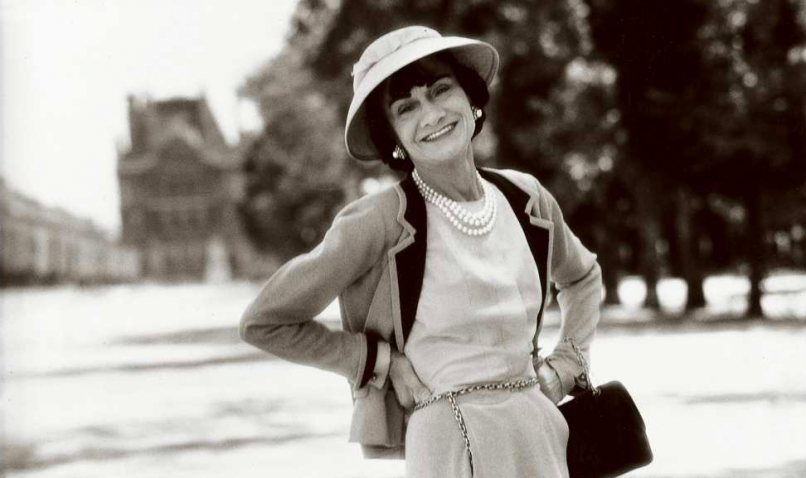
Chanel’s millinery shop quickly gained popularity among Parisian society, and her clientele expanded to include prominent figures such as actresses and singers. Her simplistic yet elegant hat designs were a departure from the extravagant and restrictive fashions of the time, and they embodied a newfound sense of freedom for women. Chanel’s success in the millinery business laid the foundation for her journey into the world of fashion.
In 1913, Coco Chanel opened her first fashion boutique at 31 Rue Cambon in Paris, expanding her offerings to include ready-to-wear clothing. She presented a collection of jersey garments, traditionally used for men’s undergarments, as her choice of fabric – a radical move that raised eyebrows in the fashion world. However, her unique designs resonated with a clientele seeking comfort, simplicity, and elegance, establishing her as a pioneering force in women’s fashion.
Throughout the 1920s and 1930s, Coco Chanel continued to refine her signature style, which emphasized clean lines, monochromatic palettes, and classic silhouettes. She introduced the iconic Chanel suit, featuring a collarless jacket and a fitted skirt, which became a symbol of timeless elegance and sophistication. Other significant contributions to fashion included the “little black dress” and her innovative use of jersey fabric, pearls, and costume jewelry to elevate women’s attire.
In 1921, Coco Chanel collaborated with Russian perfumer Ernest Beaux to create her first fragrance, Chanel No. 5. The fragrance, known for its complex and alluring scent, was named after the fifth sample presented to Chanel during the testing process. Chanel No. 5 became an instant success, revolutionizing the perfume industry and becoming an enduring symbol of luxury and allure.
The onset of World War II and the subsequent closure of Chanel’s boutique marked a challenging period for the brand. However, Chanel’s return to the fashion scene in the 1950s reaffirmed her iconic status. The brand experienced a resurgence under the creative direction of Karl Lagerfeld, who assumed the position in 1983. Lagerfeld paid homage to Coco Chanel’s legacy while infusing contemporary elements into the brand, ensuring its continued relevance and appeal to new generations of fashion enthusiasts.
A Timeless Legacy
The founding history of Chanel is a testament to the indomitable spirit and visionary genius of Gabrielle “Coco” Chanel. From her humble beginnings to transforming the fashion landscape with her innovative designs, Chanel’s journey is an inspiring tale of determination and creativity. Today, Chanel stands as an iconic and influential fashion house, perpetuating the legacy of its founder and continuing to set the standard for elegance, sophistication, and timeless style in the world of haute couture.
Marketing Strategies of Chanel: Elegance, Exclusivity, and Timeless Appeal
Chanel, a pinnacle of luxury and sophistication in the fashion industry, employs a range of meticulously crafted marketing strategies that have contributed to its enduring success and iconic status. From positioning itself as a symbol of elegance to embracing innovative storytelling, Chanel’s marketing efforts epitomize the allure of haute couture and high-end fashion. Let’s explore the key marketing strategies of Chanel in detail:
Positioning as a Symbol of Elegance and Luxury:
Chanel has successfully positioned itself as a symbol of elegance and luxury through its marketing strategy. This involves creating a unique image for the brand that resonates with its target audience and differentiates it from competitors. For example, Chanel’s iconic interlocking “C” logo and quilted handbag design have become synonymous with high-end fashion and luxury goods. Additionally, the brand consistently uses high-quality materials, precise craftsmanship, and attention to detail in all aspects of their products, which further reinforces this perception among consumers.
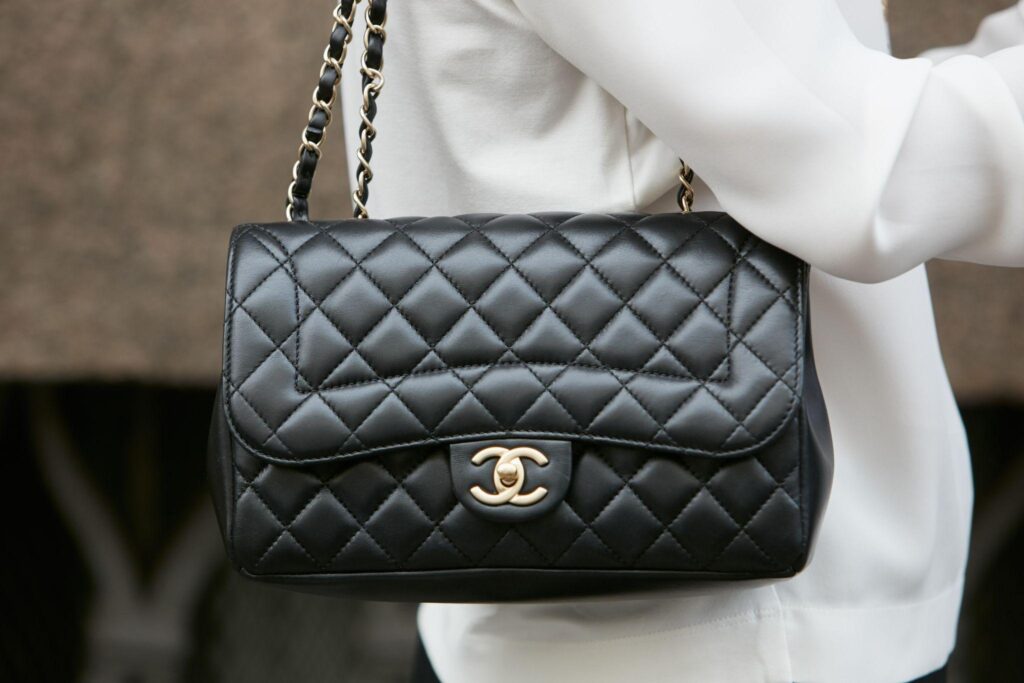
In addition to product quality, Chanel leverages celebrity endorsements, exclusive events, and partnerships with prestigious institutions such as art museums to enhance its reputation as a symbol of elegance and luxury. These tactics create a sense of exclusivity around the brand and appeal to customers who desire access to these elite experiences.
Overall, Chanel’s positioning as a symbol of elegance and luxury serves as a key component of its overall marketing strategy by establishing a strong emotional connection with its target audience and setting it apart from competitors in the crowded luxury fashion industry.
Storytelling and Brand Identity
Storytelling and brand identity are important components of Chanel’s marketing strategy. By using storytelling techniques, Chanel creates a narrative that connects with its target audience on an emotional level and helps build a strong relationship with them over time.
One of the ways Chanel tells stories is through its advertising campaigns, which often feature aspirational imagery and messaging that taps into the desires and dreams of its target customer base. For instance, Chanel’s Spring/Summer 2019 ad campaign featured models walking down a Parisian street wearing the latest ready-to-wear collection while surrounded by whimsical elements like giant paper flowers and inflatable swans. This imaginative approach not only showcased the clothing but also created a fantastical world that captured viewers’ imagination and sparked conversation online.
Another aspect of Chanel’s storytelling efforts is its use of social media platforms like Instagram to share behind-the-scenes glimpses of its creative process and insider looks at runway shows and events. This content provides valuable insight into the brand’s values and culture, helping to foster a deeper understanding of what makes Chanel unique among luxury fashion brands.
As far as brand identity goes, Chanel maintains a consistent visual language across all touchpoints, including packaging, store designs, website layouts, and even employee uniforms. This cohesive look and feel helps to strengthen consumer recognition and association with the brand, making it easier for customers to identify Chanel products and services.
Moreover, Chanel regularly collaborates with renowned artists, photographers, and filmmakers to produce short films and installations that bring its collections to life in unexpected yet captivating ways. These projects not only elevate the brand’s image but also contribute to its cultural legacy and cement its status as an innovator in the fashion industry.
Embracing Celebrity Endorsements
One of the marketing strategies employed by Chanel is embracing celebrity endorsements. This technique involves partnering with influential figures in entertainment, sports, and other industries to promote the brand and increase visibility among specific demographics.
For instance, Chanel frequently dresses celebrities for red carpet appearances and awards ceremonies, ensuring that its designs receive widespread exposure in front of millions of television viewers and online followers. Moreover, the brand has worked with prominent personalities like Pharrell Williams, who designed a capsule collection for Chanel and served as a spokesperson for several seasons.
By aligning itself with popular public figures, Chanel capitalizes on their massive fan bases and generates buzz around new product launches or seasonal offerings. Furthermore, featuring famous individuals in advertisements and editorial spreads adds an extra layer of glamour and prestige to the brand’s image, attracting more customers interested in luxury fashion.
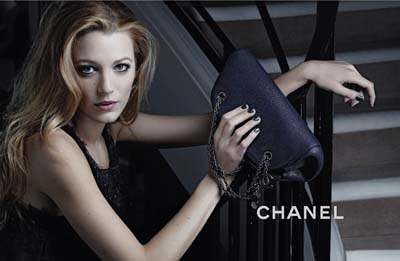
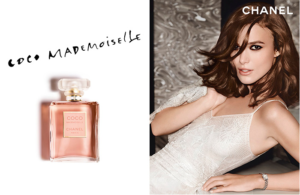
However, Chanel carefully selects which celebrities to work with based on shared values and a commitment to diversity, inclusiveness, and sustainability. This approach ensures that the brand remains true to its core principles while expanding its reach and relevance in today’s fast-changing society.
Additionally, Chanel incorporates celebrity endorsements into larger experiential marketing initiatives like pop-up shops, exhibitions, and charitable events. These immersive activations provide opportunities for customers to interact with the brand and its ambassadors in person, deepening their emotional connections and fostering long-term loyalty.
Overall, Chanel excels at adjusting its marketing mix to address contemporary challenges and opportunities because it prioritizes listening to customers and staying attuned to changes in the marketplace. By doing so, the brand continues to stand out in the competitive landscape of luxury fashion and retain its loyal following.
The Power of Chanel No. 5 Perfume
The iconic Chanel No. 5 perfume represents one of the most powerful marketing tools in the brand’s arsenal. Launched in 1921, the fragrance quickly became synonymous with elegance, sophistication, and femininity – attributes closely associated with the Chanel name.
The longevity and success of Chanel No. 5 are rooted in several key factors:
Iconic packaging: The bottle design features a rectangular shape with beveled edges and a simple label bearing the signature interlocking Cs. Its minimalist style stands apart from flashier, more ornate packages common in the beauty industry. Over time, the bottle has become instantly recognizable and synonymous with quality and refinement.
Timeless scent: The floral aldehyde composition created by Ernest Beaux has remained largely unchanged since its debut nearly a century ago. While some variations have been introduced over the years, the essence of Chanel No. 5 has retained its classic appeal, making it a beloved choice across multiple generations.
Celebrity endorsements: Many notable women throughout history have worn Chanel No. 5, including Marilyn Monroe, Nicole Kidman, and Audrey Tatou. Their association with the fragrance reinforces its allure and exclusivity, driving interest and sales.
Limited edition collaborations: Chanel regularly releases special editions of Chanel No. 5, often tied to holidays or major events. Collaborations with high-profile names like Karl Lagerfeld or artist Jeff Koons generate excitement and encourage collector behavior among fans.
Emotional connection: Wearing Chanel No. 5 evokes feelings of confidence, luxury, and sophistication. Women associate the fragrance with achieving their full potential and embodying the spirit of Coco Chanel herself. This emotional attachment creates a strong bond between wearers and the brand, fueling customer loyalty and repeat purchases.
Global recognition: Chanel No. 5 is widely recognized as a premium fragrance, ranking among the best-selling fragrances worldwide. Its status as an iconic symbol of luxury and elegance makes it a top choice for discerning shoppers seeking to elevate their daily routines.
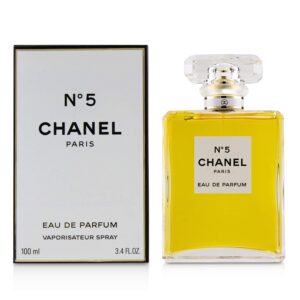
In summary, Chanel No. 5 remains a cornerstone of the brand’s marketing strategy due to its timelessness, versatility, and universal appeal. The fragrance embodies the values that define the Chanel legacy while continuously attracting new generations of admirers through limited editions, celebrity associations, and strategic collaborations. As long as these elements persist, Chanel No. 5 will likely maintain its prominent place in the hearts and minds of consumers around the globe.
Artistic Collaborations and Fashion Shows
Chanel actively engages in artistic collaborations and runway shows to showcase its latest collections and innovations. The brand’s fashion shows, hosted in opulent settings like the Grand Palais in Paris, are carefully orchestrated events that attract global attention. These shows not only present new designs but also reinforce Chanel’s status as a fashion authority and trendsetter.
Artistic Collaborations:
One way Chanel leverages artistic collaborations as a marketing strategy is by partnering with renowned artists who share similar values and aesthetics. These partnerships not only bring fresh perspectives to the brand but also help foster creative dialogue between different industries. For instance, Chanel has worked with various musicians, photographers, filmmakers, and architects to produce unique pieces inspired by the brand’s heritage and vision.
These collaborations allow Chanel to reach new audiences beyond the fashion sphere and tap into the existing fanbases of participating artists. They also provide a platform for both parties to showcase their expertise and push boundaries together. By associating themselves with trailblazers in other fields, Chanel positions itself as a forward-thinking brand committed to innovation and cultural exchange.
Fashion Shows:
Another crucial aspect of Chanel’s marketing approach involves staging spectacular runway presentations. Each season, the brand stages elaborate fashion shows that blend couture, music, set design, and performance art. These productions not only preview upcoming collections but also convey the brand’s distinctive personality and sense of humor.
Chanel uses fashion shows as immersive experiences designed to captivate and inspire viewers. The brand understands that today’s consumers crave authenticity and storytelling, so each presentation tells a narrative that resonates with audiences. Whether paying homage to Coco Chanel’s life or imagining futuristic scenarios, Chanel crafts cohesive thematic journeys that leave lasting impressions.
By live streaming these events and sharing behind-the-scenes content, Chanel ensures that its message reaches a wider audience than just those physically present.
By live streaming these events and sharing behind-the-scenes content, Chanel ensures that its message reaches a wider audience than just those physically present. Social media coverage amplifies the buzz surrounding each show, generating conversation and fueling consumer desire for the latest collection. Additionally, Chanel often incorporates interactive elements during its fashion shows, such as inviting celebrities or influencers to walk the runway or engaging guests through experiential activations. These tactics further enhance the event’s impact and create memorable moments that attendees can share with others.
Overall, Chanel utilizes artistic collaborations and fashion shows as powerful marketing tools because they enable the brand to tell compelling stories, connect with diverse communities, and spark conversations about what defines modern luxury. By consistently delivering exceptional experiences and products, Chanel cultivates a passionate following eagerly awaiting each new chapter in its ongoing tale of style and substance.
Experiential Marketing
Experiential marketing involves creating immersive experiences for consumers that engage them directly with a brand. This type of marketing allows customers to interact with products or services in a tangible way, rather than just seeing advertisements or reading descriptions online. For example, Chanel might create pop-up stores or installations where customers can try on clothes, speak with stylists, or attend events related to their latest collections.
Chanel uses experiential marketing to build relationships with customers and increase brand loyalty. By providing memorable experiences that connect customers to the brand, they aim to foster long-term connections with their audience. Additionally, these types of campaigns often generate buzz through social media sharing and word-of-mouth recommendations from satisfied customers who have experienced the event firsthand.
One of the key ways that Chanel utilizes experiential marketing is through hosting exclusive events and parties around the world. These events typically feature high-profile guests such as celebrities, influencers, and members of the press, which generates significant publicity for the brand. In addition, Chanel often collaborates with other luxury brands at these events, allowing them to showcase their products and services while building partnerships within the industry.
Another important component of Chanel’s experiential marketing efforts is their focus on personalized customer service. They offer clients one-on-one consultations with style advisors who can assist with everything from selecting clothing items to coordinating complete looks. This level of attention not only enhances the overall shopping experience but also encourages repeat business and positive word-of-mouth referrals.
In terms of digital marketing initiatives, Chanel leverages platforms such as Instagram and TikTok to share behind-the-scenes content from their runway shows and backstage preparations. This approach provides followers with insider access to the brand’s creative process and fosters a sense of community among fans. Furthermore, Chanel regularly releases limited edition capsule collections that sell out quickly due to their exclusivity and unique designs.
Digital Engagement and Social Media
Digital engagement refers to the practice of actively participating in conversations and interactions with customers via digital channels such as email, chatbots, messaging apps, and social media platforms. Chanel recognizes the importance of maintaining strong relationships with their clientele through these mediums and strives to respond promptly and professionally to all messages received.
Social media plays a crucial role in Chanel’s marketing mix because it enables them to reach new audiences beyond traditional print publications and television commercials. With over 50 million followers across various platforms, Chanel frequently posts updates featuring their latest collections, upcoming events, and behind-the-scenes glimpses into their design process. Their content is designed to inspire and educate viewers while emphasizing the quality and craftsmanship associated with each piece.
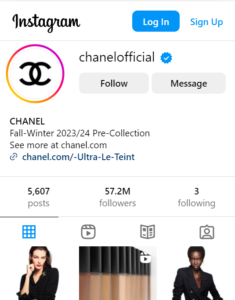
Additionally, Chanel capitalizes on user-generated content (UGC) by reposting images shared by customers wearing their apparel or posing with Chanel merchandise. Not only does this encourage others to tag @ChanelOfficial in their own photos, but it also demonstrates the versatility and timelessness of their pieces. Moreover, Chanel occasionally hosts contests or giveaways that require entrants to post pictures using designated hashtags, thereby amplifying their presence on social media even further.
When it comes to paid promotional activities on social media, Chanel tends to favor influencer partnerships over standard display ads. They carefully select individuals whose values align with those of the brand and task them with showcasing particular lines or seasonal trends. These collaborations often result in viral content that resonates with both existing and potential customers alike.
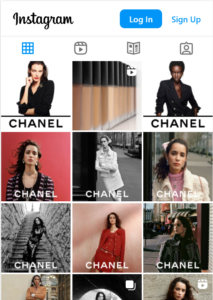
Finally, Chanel takes advantage of ephemeral content formats popularized by Snapchat and Instagram Stories. Whether sharing quick snaps of their Parisian headquarters or sneak peeks of new arrivals before official release dates, Chanel understands the power of short-lived content in keeping their following engaged and excited about what’s coming next. Plus, incorporating interactive elements like polls or Q&A sessions allows Chanel to gather feedback directly from their audience and adjust their marketing tactics accordingly.
All things considered, Chanel’s digital engagement and social media marketing strategy succeeds in connecting with consumers on an emotional level. The brand’s commitment to storytelling and authenticity through visual content resonates strongly with its audience, ultimately driving sales and solidifying Chanel’s position as a leader in the luxury goods industry.
In conclusion, Chanel’s marketing strategies epitomize the art of luxury branding, skillfully intertwining heritage, elegance, and innovation to maintain its esteemed position in the fashion world. Through product innovation, limited editions, and strategic celebrity endorsements, Chanel keeps its allure fresh and captivating. The brand’s captivating visual content and immersive retail experiences in flagship stores reflect their commitment to creating an aspirational lifestyle for their discerning clientele.
Embracing digital marketing and social media while staying true to its exclusive image further widens its global reach. By skillfully leveraging its iconic products, telling compelling stories, and prioritizing personalized customer experiences, Chanel nurtures a lasting bond with its loyal customers.
While continuously evolving, Chanel’s marketing prowess remains a beacon of excellence, setting the bar high for the luxury industry and leaving an indelible mark on the hearts and minds of fashion enthusiasts worldwide.
Marketing Mix of Chanel
The marketing mix, also known as the 4Ps (Product, Price, Place, and Promotion), is a fundamental concept in marketing that outlines the key elements a company like Chanel utilizes to achieve its marketing objectives. Let’s delve into each element of the marketing mix for Chanel:
Product:
Chanel’s product offerings are the epitome of luxury and elegance. The brand’s clothing lines include haute couture and ready-to-wear collections that feature classic silhouettes, high-quality fabrics, and impeccable tailoring. Chanel’s clothing designs often combine modern trends with timeless elements, creating pieces that remain relevant and stylish for years.
In the accessories category, Chanel is best known for its handbags, particularly the iconic Chanel 2.55 flap bag. These handbags are meticulously crafted from the finest materials and are instantly recognizable by their quilted design, chain straps, and the interlocking “CC” logo. Chanel also offers a wide range of luxury shoes, from sophisticated pumps to stylish sneakers, all reflecting the brand’s signature style.
The beauty sector is equally important for Chanel, with its wide range of cosmetics, skincare products, and fragrances. The brand’s beauty products are crafted with a focus on innovation, high-quality ingredients, and elegant packaging. The Chanel No. 5 perfume, created by Gabrielle “Coco” Chanel in 1921, remains an iconic fragrance and a symbol of luxury and femininity.
Price:
Chanel’s pricing strategy is rooted in its positioning as a high-end luxury brand. The brand’s products command premium prices, reflecting the exclusivity, craftsmanship, and reputation associated with the Chanel name. The haute couture pieces, in particular, are bespoke creations that come with a substantial price tag, reserved for a select clientele.
The iconic Chanel handbags, including the Chanel 2.55 flap bag and the Boy bag, are considered investment pieces due to their timeless design and enduring value. While the prices of Chanel products may be higher than those of many other luxury brands, customers are willing to pay a premium for the brand’s heritage, quality, and status.
Place:
Chanel maintains a selective and exclusive distribution strategy to ensure that its brand image and products are presented in a controlled and premium environment. The brand operates its own network of boutiques and flagship stores in major cities around the world. These stores are strategically located in upscale shopping districts and renowned fashion capitals, such as Avenue Montaigne in Paris and Fifth Avenue in New York City.
By having its own boutiques, Chanel can create a unique and immersive shopping experience for customers, allowing them to fully immerse themselves in the world of Chanel. The brand’s boutiques are designed with elegance and sophistication, reflecting the brand’s aesthetic.
In addition to its own boutiques, Chanel products are available in select high-end department stores and luxury retailers, but the brand exercises strict control over these partnerships to ensure the brand’s positioning and image are maintained.
Promotion:
Chanel’s promotion strategy revolves around creating an aspirational and glamorous image. The brand invests in high-quality visual content and storytelling for its advertising campaigns. Chanel’s print ads, digital campaigns, and TV commercials often feature top models, actresses, or influential figures who embody the sophistication and elegance associated with the brand.
The brand’s fashion shows and events, held in prestigious venues, garner significant media attention and social media buzz. These events serve not only to showcase new collections but also to reinforce Chanel’s position as a trendsetter in the fashion industry.
Chanel has also embraced social media and digital marketing to reach a broader audience. While still maintaining an air of exclusivity, the brand shares behind-the-scenes glimpses, fashion show highlights, and other engaging content on platforms like Instagram and YouTube, connecting with fashion enthusiasts worldwide.
Additionally, Chanel’s limited-edition collections and collaborations create a sense of urgency and exclusivity among consumers, driving demand for their products.
In summary, Chanel’s marketing mix is a harmonious blend of luxury, elegance, exclusivity, and innovation. Their meticulously crafted products, premium pricing, exclusive distribution, and aspirational promotions contribute to their iconic status and enduring appeal in the competitive world of luxury fashion and beauty.
Also Read: Marketing Strategies, Marketing Mix and STP of Moncler
To read more content like this, subscribe to our newsletter
